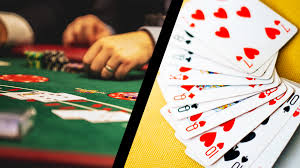Card counting is used in blackjack as a way to beat the house edge which is usually as high as 10.2% in ordinary blackjack. Card counting is also referred to as tracking, safer-money-management and advanced-comparison. The act of card counting is normally applied to a single deck game of blackjack, although it is possible to do the same with a multi-deck game of blackjack. The main card counting method is the count newsletter/card counting method. This is a method ofUnit control Others have various Unit controls, however, the method I will present here, is the Basic Hi-Lo Count.

The purpose of this method, is to determine if the deck left to the dealer contains more cards favorable to the player than the dealer. Card counting is usually applied to a single deck game of blackjack. The deck which contains the highest number of cards devoted toward making blackjack will have high cards and aces mostly but a few tens and so on. When a deck devoted toward making blackjack contains few cards favorable to the dealer, this gives the house less advantage. This concept is very important to keep in mind.
The hi-lo card counting method increases the advantage of the player and decreases the house advantage by 3 %. The idea of this method is to keep track of the cards played on the various tables during the previous few hands. This process is called ‘counting’. The process of counting is based on the principle that a deck with high cards (short cards) is favorable to the player, whereas a deck with low cards (narrow cards) is favorable to the dealer.
The procedure is simple. Assuming the playing field is an even one, simply remember to add the number of cards played on each table in relationship to the number of cards remaining in the deck. ‘Counting’ is the act of adding or subtracting a number when you are calculating the advantage of the two playing blinds.
So, given our once again favorable hand – five cards – and knowing that we have one less card than what we need, we have +1 card. That makes our lousy hand, 6, less favorable to the player. Further, we know that our hand will probably not be good, so we have low cards in relationship to our ragged high cards. One way of remembering this is that the once-twice hand has only a 30% chance of being good, whereas the high-low hand only has a 15% chance of being good.
What should we do with this information? First, we should Sets our outs. We will call this out ‘O’, and we replace the various cards that do not give us the high hand with various other cards. Next, we have to make what’s called a possible gutshot straight. Remember, our hand is strong, but not unbeatable. If we can land a straight on the river, with low cards, that would be the ideal. Anything that gets us closer to the nuts is a good play. Because of the Potential for a Bad Beat, you do not want to make this decision lightly.
That is, if you have a chance to win the hand, even with terrible cards, you should bet. Your bluff thus would be to make the other players think that you have the better cards. Typically you would bluff by betting a similar amount as you would with a good hand. But, you need to be careful not to give away any tells; that is, to make your behavior consistent with your known good cards, or even known bad ones.
Certainly, you can succeed with this bluff if you have a good hand. The trick is to do it against opponents who are not aware of the concept. You have to do it during the middle part of a game, when the number of opponents is still higher and less number of cards are yet available. By doing it that way, you avoid the risk of losing your good cards to plain tricks.
